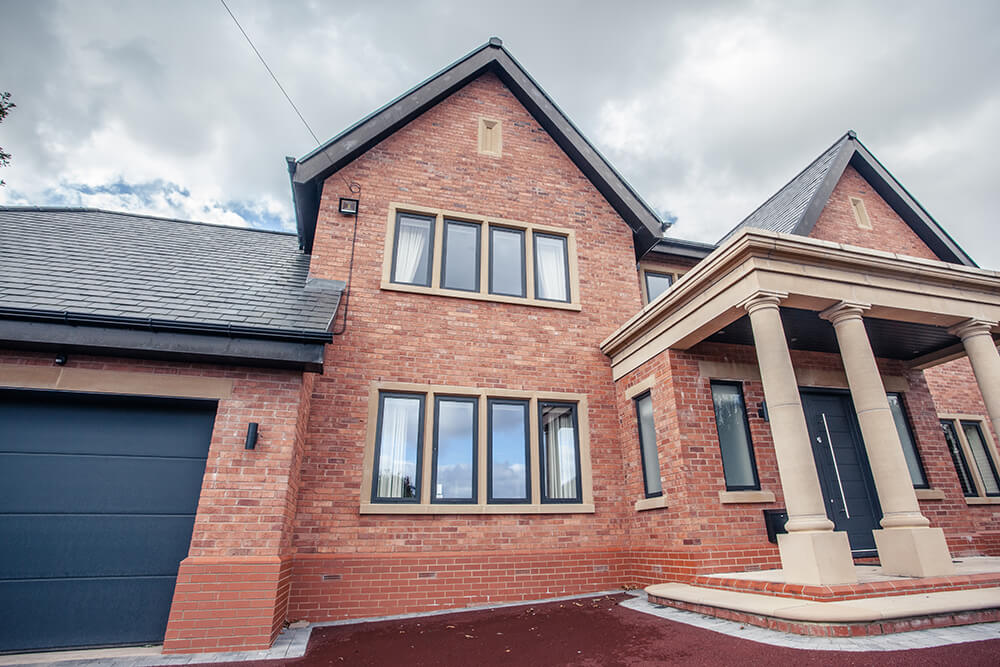
In modern construction, achieving superior thermal efficiency is no longer a luxury but an absolute necessity. With the increasing focus on energy conservation and sustainable building practices, insulation choices have taken centre stage. Structural Insulated Panels (SIPs), a cutting-edge technology, are leading this revolution, poised to revolutionise traditional insulation methods. This article aims to provide a comprehensive and in-depth comparison between SIPs and conventional insulation materials, highlighting their potential to redefine thermal efficiency in the construction sector.
SIPs represent a progressive form of insulation, featuring a unique sandwich-like structure that comprises two rigid boards enclosing an insulating foam layer. This innovative design diverges from traditional materials like fibreglass and mineral wool, with SIPs specifically engineered to offer enhanced insulation, durability, and longevity. Their distinctive construction significantly enhances thermal efficiency and effectively mitigates thermal bridging, a common issue with conventional insulation techniques.
To evaluate thermal efficiency in construction, a direct comparison must be made between SIPs and two traditional insulation types: fibreglass and mineral wool.
Fibreglass insulation, widely used in traditional settings, typically boasts an R-value ranging from 2.2 to 2.7 per inch. In contrast, SIPs offer significantly higher R-values, often exceeding 4.0 per inch, depending on their composition and thickness. This is crucial as it indicates that SIPs deliver much more effective insulation per unit of thickness, resulting in superior heat retention and energy conservation.
Also, fibreglass insulation may settle over time, or develop installation gaps, which compromise its insulating effectiveness. As opposed to fibreglass insulation, SIPs maintain their structural integrity due to their robust foam core and solid exterior, ensuring consistent insulation without gaps or settling.
While mineral wool insulation is renowned for its fire resistance and sound-dampening properties, it typically provides an R-value similar to fibreglass, ranging from approximately 2.2 to 3.3 per inch, when it comes to thermal efficiency. Providing superior thermal resistance, SIPs outperform their competition and are, thus, a great deal more energy efficient than their competitors.
Additionally, while mineral wool excels in specific applications, it falls short in addressing thermal bridging as effectively as SIPs. SIPs’ continuous insulation layer significantly reduces heat loss through thermal bridging, an advantage not inherent to mineral wool insulation.
When it comes to airtightness, SIPs provide a more consistent and secure seal compared to both fibreglass and mineral wool. This feature is essential for preserving energy efficiency by reducing air leakage, which can lead to increased heating and cooling costs. Traditional insulation materials may deteriorate or shift over time, diminishing their performance. In contrast, SIPs maintain their structural integrity and insulation properties over an extended period, ensuring sustained thermal efficiency.

Enhanced Thermal Insulation: SIPs offer significantly higher R-values than traditional insulation materials, crucial for maintaining stable indoor temperatures and reducing reliance on heating and cooling systems.
Reduced Thermal Bridging: SIPs’ continuous insulation layer substantially reduces thermal bridging, ensuring more consistent temperature control within a building.
Superior Airtightness: The exceptional airtightness of SIPs’ building envelope reduces air leakage, a key factor in conserving energy efficiency, preventing significant heat loss in winter and heat gain in summer.
Long-Term Energy Efficiency: SIPs retain their structural integrity and insulation properties over time, resulting in continuous energy savings and lower utility costs throughout a building’s lifespan.
Efficient Temperature Regulation: The combination of high R-values and airtightness in SIPs facilitates more efficient temperature control, reducing the need for external heating and cooling, thereby saving energy.
Consistent Indoor Comfort: Buildings insulated with SIPs experience fewer temperature fluctuations, providing a more stable and comfortable indoor environment. This stability benefits both energy savings and occupant comfort.
Adaptability to Different Climates: SIPs perform effectively across various climatic conditions, maintaining their thermal and energy efficiency in both cold and hot environments. This versatility makes them a suitable choice for architects and builders in diverse regions.
Sustainability Benefits: The energy efficiency of SIPs contributes to more environmentally friendly construction practices, optimising energy usage and supporting sustainable building designs.
SIPs represent a significant leap forward in thermal efficiency within the construction industry. By offering superior insulation, faster construction times, and environmental advantages, they set a new standard in building technology. As the industry continues to evolve, SIPs serve as a testament to the role of innovation in fostering more sustainable, efficient, and effective construction methods.
Their ability to outperform traditional insulation methods in numerous aspects makes them an attractive option for those seeking to build with energy efficiency and sustainability in mind. With their growing popularity, SIPs are set to play a pivotal role in shaping the future of construction and building design.
Architects and self-builders, for your next project, harness the thermal efficiency of SIPs. Get in touch with us to integrate this innovative solution into your build. Let’s craft sustainable, comfortable spaces together.